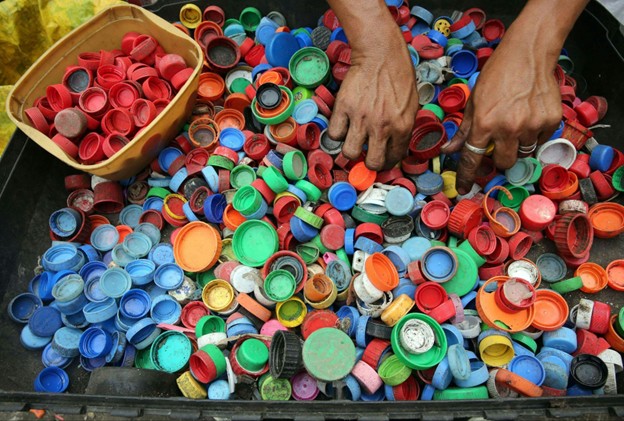Content
A staunch reaction to staying ahead of evolving EU legislation and increasing demands on sustainability, packaging specialist Modulpac has officially committed to setting science-based climate goals under the SBTi and extending tethered-closure solutions to meet the EU's Single Use Plastics Directive. The strategy integrates climate ambition with closure innovation.
Within the realm of high-speed packaging, staying one step ahead of regulation is as vital as staying one step ahead of trend. For Modulpac, the company that specializes in plastic closures and caps with flexible and tailor-made design, the regulatory environment within Europe has inspired a two-stranded response: Openly aligning its climate ambitions with scientific norms and accelerating development on tethered closures to address new EU standards. What does this in practice? And how is Modulpac positioning itself to turn regulatory pressure into competitive strength?

Source: Pexels.com
From Commitments to Credibility with Science-based Targets
Why Science-based Targets Matter
Telling is one thing; backing it up with action driven by measurable, science-warranted targets is another. The Science Based Targets initiative (SBTi) provides a sound framework that allows companies to set greenhouse gas (GHG) emission reduction targets in line with limiting global warming to 1.5 °C or remaining well below 2 °C.
By signing up to the SBTi officially, Modulpac undertakes to make near-term, company-wide greenhouse gas cuts on the basis of climate science. It is not a PR stunt: It demands transparent planning, internal overhaul, monitoring and regular reporting.
Modulpacs Action and What it Signifies
Modulpacs announcement indicates it will set up emissions targets" in accordance with climate science" and has committed to submitting them through SBTi. While the targets are to be confirmed, the official pledge signals that sustainability is no longer a secondary conversation; it's at the heart of the company's strategy.
From the packaging industry's point of view, the move de-risks future regulatory pressure (or carbon pricing), enhances trust with customers who are themselves pressured or mandated to decarbonize and places its brand as forward-thinking.
Challenges Ahead
Yes, the ride will be bumpy. Modulpac will need to map emissions by scopes; direct activities (Scope 1), energy use (Scope 2) and likely supply chain and downstream emissions (Scope 3). SBTi encourages companies to tackle all scopes that are relevant, especially where Scope 3 makes up a large proportion of total emissions.
They'll need to invest in cleaner energy, process improvements, supply chain changes for materials, maybe modify transport arrangements and engage their suppliers. Achieving internal buy-in, integrity of data and long-term momentum aren't easy tasks.
In brief: The promise is ambitious, but implementation will tell us whether Modulpac can achieve it.
EU Rules Navigation and the Tethered Closure Imperative
What the EU is Demanding
The EUs Single Use Plastics Directive (Directive 2019/904), particularly Article 6, requires that since July 2024, plastic drink containers (less than or equal to 3 liters) utilize caps or closures that stay attached to the container once opened. The message is clear: Minimize litter, avoid lost caps to contaminate the environment and enhance recycling habits.
Tethered caps (hinged or flexible tethered caps to the bottle neck) are one well-established design to accomplish that. Since July 2024, the majority of drink bottles within the EU had to comply.
How Modulpac is Responding
Modulpac has been preparing for this transition. Its tethered-closures range is designed precisely to meet the EU Directives vision: Closures that stay attached to the container after opening, enabling proper disposal and recycling without compromising convenience or performance.
Modulpac offers more and more standard tethered cap solutions: 28 mm ropp tethered, spray insert closures, pilfer proof tethered caps, to name a few, all solutions designed to accommodate the new regulations.
Importantly, the business maintains that these closures do not sacrifice user performance for compliance with regulations; they are meant to offer convenience, seal integrity and ease of user interaction, where possible.
Growing Big is the Operations Challenge
Retooling existing product lines or toolkits into tethered closures is not easy. Mold redesign, retooling, investment in machinery (injection molding, capping, filling lines) and high-level testing for quality may be involved.
Furthermore, inspection systems must be adaptable. Since tethered caps are more geometrically complex (with hinges, thinner areas, tethers), optical quality control and inspection systems must be calibrated or remapped to detect flaws correctly.
In the broader marketplace, suppliers along the plastics and packaging value chain must contend with material variation (typically less plastic to comply with "reduce plastic use" demand), geometry constraints and supply chain impacts.
However, such challenges also present opportunity. Organizations like Modulpac that move early have an early start with experience, more developed designs and customer confidence.
Merging Climate Strategy with Product Strategy
Why These Two Steps Work Together
At first blush, establishing science-based climate goals and scaling tethered closures could seem to be parallel but distinct initiatives. But for Modulpac, they complement one another.
- Regulation alignment: The EU initiative on tethered closures is the overall agenda for sustainability. By tackling that regulation directly, Modulpac proves it's committed to becoming green.
- Material efficiency: In order to achieve climate objectives, companies must reduce material use, improve recycling and design circular products. Tethered closures can be employed to create recycling gains (improved recovery of caps) and drive design minimisation (less unwanted plastic).
- Customer demand: Some of Modulpac's food, beverage, pharma and chemical customers independently have brand or regulatory incentive to reduce carbon, plastic consumption and circular packaging. To be among the initial suppliers with compliant, climate-responsible solutions is a compelling argument.
- Risk mitigation: If a closure supplier lags in sustainability commitments or regulatory compliance, they risk losing business, damaging reputation or investing in retrofit fees under a time deadline.
By integrating climate ambition and product compliance under one joint agenda, Modulpac is able to better align investments (for instance, in R&D, facility upgrades, design software) and tell a more integrated story to customers, investors and stakeholders.
